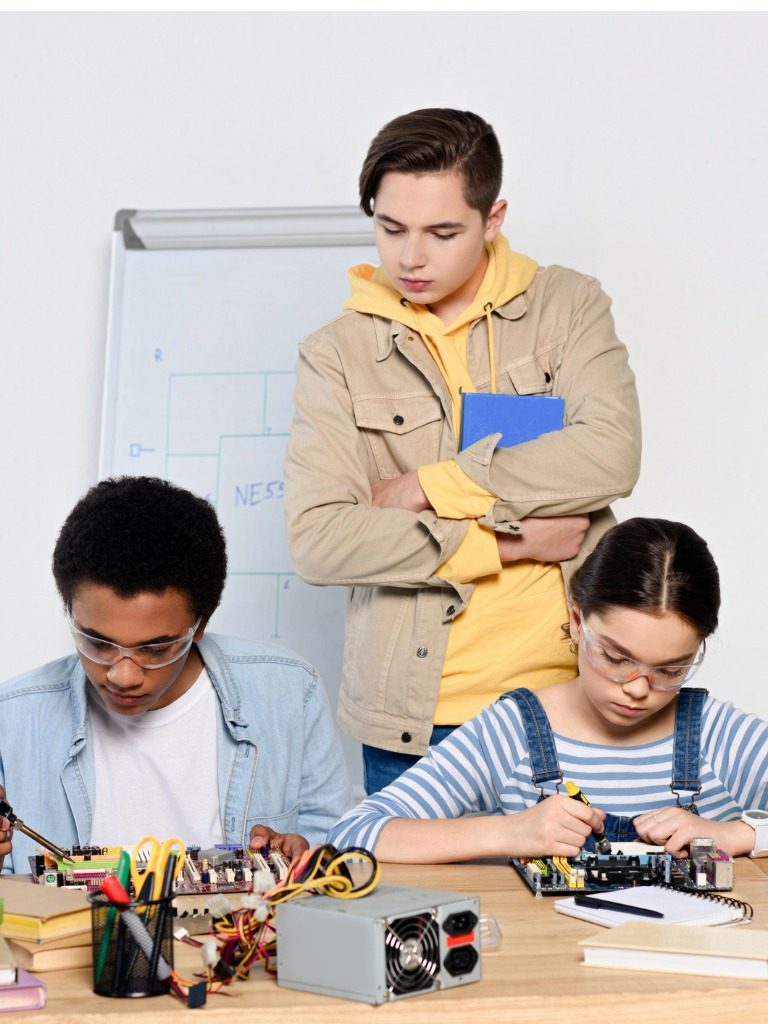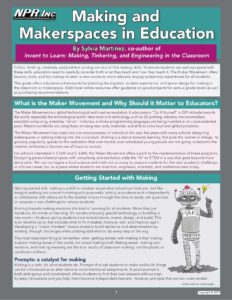The world grows more diverse daily, but outdated teaching modalities prohibit full equity in the classroom. Traditional techniques — such as lecturing — engage only a small percentage of learners.
Children learn through all their senses, not only their ears. While discussion engages more than explanation, even this practice alienates kids with physical, mental or emotional disabilities that make speaking difficult or intimidating. Experiential learning engages all learners effectively, including those too often left behind otherwise.
What Is Experiential Learning?

Experiential learning refers to a process through which a learner constructs knowledge, skills and values from direct experience. In experiential learning, students gain knowledge not directly from the instructor, but rather from actions they perform and observations they make.
By its very nature, experiential learning engages young minds. When students listen to a teacher explain a difficult concept, their thoughts may wander anywhere but on the subject matter. The result? Educators grow frazzled as students ask question after question that teachers may feel they’ve already covered.
However, if a student needs to figure out how to construct a model or correct an error in programming code independently, they engross themselves fully in the task. Educators can measure student engagement through observing their active behaviors and work products. Compare this to their ability to identify whether a student is listening to a lecture or daydreaming.
Experiential learning also helps prevent misunderstandings that can occur when instructors explain concepts rather than actively demonstrate and engage students. Outdated lecture techniques and poor teaching methods tend to allow too much room for errors in reasoning or understanding, which only harms students. Conversely, allowing the students to directly experiment or participate will solidify concepts long-term and facilitate better learning.
How Experiential Learning Engages All Learners Effectively and Increases Equity
Experiential learning fulfills one of the goals of liberal education — allowing students to apply specialized knowledge to broader, more general situations. Knowledge in isolation means little to many children. Every educator has heard a student lament something like, “Why do I need to learn algebra? I want to become an artist.” However, when students grasp how algebraic principles apply to everyday tasks, they respond more positively.
The “maker movement” is an increasingly popular model for providing experiential leaning opportunities in schools (and beyond). Making involves hands-on experiences and promotes a DIY attitude that helps students develop critical thinking, creativity, and problem-solving skills. Through making, students have the opportunity to brainstorm, invent, design, and build—an integrative cycle that includes time to fix mistakes, improve, test, and refine. This process instills a “maker mindset” in which students build resilience and determination by working through challenges. Although making involves working on a product (which can range from computer programing to crafts to robots), the real benefits of making in the classroom or designated makerspaces is making sense, making connections, and making meaning.
Sylvia Martinez, best selling author of Invent to Learn and Making and Makerspaces in Education, posits: “Imagine walking into a room humming with purposeful activity as students work independently or collaborate with others while the teacher moves through the class to assist, ask questions, or propose a new challenge to various students. Moving towards making envisions this kind of learning for all students.”
Another example of experiential learning is the way indigenous peoples have trained their youth throughout the millennia. Educator and Chewonki Team Development Coordinator Shelly Gibson takes note of the ancestral nature of using mentors to guide experiential learning. For example, if a village elder wished to teach a young charge how to make flour, she wouldn’t begin by explaining the history of wheat cultivation. She would teach them how to pound the wheat into flour — and throughout the learning process, add the fascinating history and science guiding the craft.
Research indicates students immersed in experiential learning enjoy long-term, transformational effects. For example, students who study abroad often take further action after their experience, traveling to less-developed regions and sharing their knowledge with others. Learning through experience also enables students of different learning styles to engage in a way that makes sense to them.
Experiential learning accomplishes two primary educational goals — it gets all students engaged and encourages them to apply their knowledge to improve their communities.
Overcoming the Need to Lead Among Educators
To implement experiential learning, teachers need to learn to let go of their desire to lead. They need to check their egos so they can create an environment where deeper learning can occur effectively. They need to step away from the front of the class and adopt a mentor mindset.
Administrators can encourage experiential learning by understanding the transition will involve considerable effort from staff members. They can help staff discover strategies for implementing experiential learning as the meat of their lessons instead of a complementary side dish. They can exhibit understanding during classroom observations, secure in the knowledge that such environments may look and sound messier than the orderly lecture hall, but that’s more than acceptable — it is commendable and conducive to an equitable classroom experience. They can fund and implement makerspaces in schools–dedicated spaces where students can access low and high tech materials for creating and tinkering as they learn.
Experiential Learning Enhances Equity and Improves Outcomes
Experiential learning benefits all students, not only those with special needs. The individualized, engaging nature of the methodology helps children of all learning styles excel. It should be implemented as the bulwark of the lesson rather than a fashion accessory to the subject matter. In this way, all students will enjoy a broader application of their learning across disciplines — and turn their classroom studies into stepping stones toward an equitable, open-minded future.
About the Author
Alyssa Abel is an education blogger with an interest in experiential learning, educator resources, early education and higher education. Follow her updates for students and educators alike on her website, Syllabusy.









